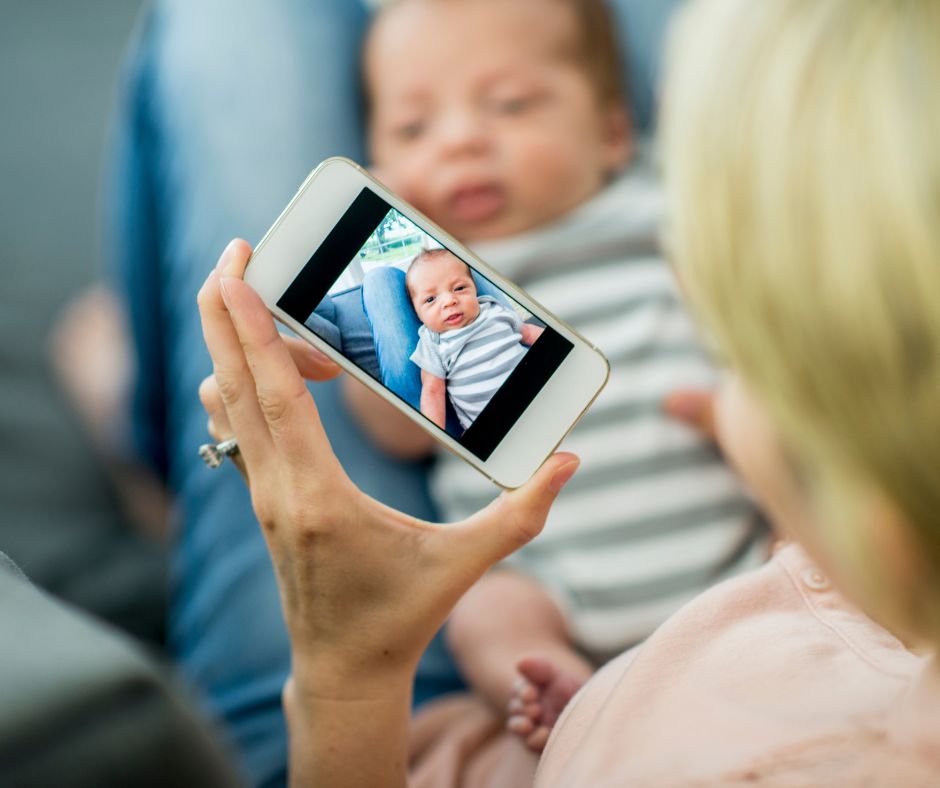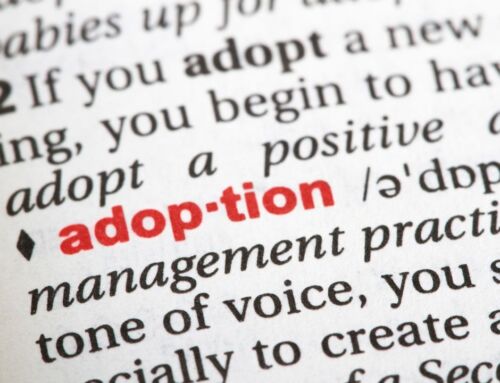Social Media Use in Open Adoption Relationships: Advice from an Adoption Professional
June 2, 2025

In the U.S., an estimated 72% of adults use social media—and chances are, you’re one of them. The same goes for your child’s birth parents. Platforms like Instagram or Facebook can seem like the perfect way to share updates, post photos, and stay connected. But when it comes to open adoption, social media requires a bit more thought and care.
Rory Hall, Executive Director of Adoption Advocates, shares insights from real adoptive families and what to consider before you hit that “Follow” button or accept a friend request.
Things Are Rosiest in the Beginning
Relationships between birth and adoptive parents evolve over time. While each journey is unique, most follow a general progression:
1. Honeymoon Phase
This is the beginning—full of relief and excitement. Many expectant parents and adoptive families are nervous before meeting, uncertain of what to expect. Once connected, they’re often pleasantly surprised by how much they have in common and how natural it feels. It’s fun getting to know one another (very much like dating) and to ignore the emotions that will be experienced in the future.
2. Placement Reality
As the due date approaches, emotions intensify. Expectant moms may need more space to process their decision. Birth parents often experience anxiety about how they’ll feel after the baby arrives. At the same time, adoptive parents may worry if the placement will proceed as planned. It’s a deeply emotional time for everyone involved.
3. After Placement
Post-placement is a period of adjustment. Birth parents are recovering physically and emotionally—grieving, healing, and redefining their roles. Adoptive parents are bonding with their child, adjusting to new routines, and sometimes navigating unresolved feelings related to infertility or loss.
4. Post-Adoption
Over time, the relationship between birth and adoptive families begins to settle. Each party gains a better sense of boundaries, trust, and comfort in their unique connection.
Pros of Using Social Media as a Method to Communicate and Share
Social media can offer convenience and inclusivity, especially in the early stages of open adoption:
- It’s easy and accessible. A quick photo or post can keep birth parents in the loop without requiring a formal update.
- It can affirm the relationship. Being connected online may help birth parents feel included, reassured, and seen.
- It’s a gesture of trust. Accepting a friend request or sharing updates on social media can show birth parents that you value transparency and want them to be part of their child’s life.
At the heart of every decision should be one guiding principle: What’s best for your child.
Cons of Using Social Media as a Method to Communicate and Share
At the same time, social media introduces risks and challenges:
- Different styles of use. Some people post frequently; others rarely interact. Misaligned expectations can lead to misunderstandings.
- Filtering your life. Adoptive parents may feel pressure to present a picture-perfect version of parenting out of concern for the birth parent’s feelings. That can feel inauthentic and emotionally exhausting.
- Uncontrolled comments. Friends or relatives may post insensitive or uninformed comments that may be painful to birth parents, And once posted, they’re hard to take back.
- “She’s so lucky to have you!”
- “I could never give up my baby.”
- “What’s her race?”
- Online digging. Almost everyone I asked admitted to looking up the other party. I know some who went back years. It’s natural and normal to want to know everything about the other person. However, you might see things you wish you hadn’t.
Both Sides Have Equal, but Different Concerns
Birth parents often express a deep desire to stay connected, but in a way that feels emotionally safe and respectful of their healing process.
Common concerns include:
- Control over when they see updates. Many birth parents want frequent photos and updates, but on their timeline. Being surprised by a post in the middle of a hard day can be overwhelming.
- Jealousy or grief triggered by others’ reactions. Seeing friends or strangers comment on milestones or gush over the child can stir painful feelings of loss or exclusion.
Adoptive parents are often equally cautious about social media. Many want to protect their child’s privacy while honoring the birth family’s role. Their concerns may include:
- Protecting family privacy. Especially for parents who are more private by nature, the idea of sharing personal moments online can feel uncomfortable or intrusive.
- Encountering difficult content. Seeing parts of a birth parent’s life online—such as posts about instability or risky behavior—can raise concerns or bring up anxieties.
- Losing control of the narrative. Once a photo is shared, it can be copied, saved, or reshared. That loss of control can feel unsettling, especially when it involves their child.
Our Recommendations
Every open adoption relationship is unique. There’s no one-size-fits-all approach to social media, but there are some helpful guidelines.
1. Give it time.
Wait at least one to two years after placement before connecting on social media. Let your relationship establish itself offline first.
2. Communicate expectations clearly.
If you decide to friend or follow each other:
- Talk about who else can connect: extended family, friends, partners.
- Set clear boundaries around what’s OK to post or comment on.
- Consider educating your family about open adoption and your relationship’s boundaries.
3. Review your privacy settings.
If your profile is public, consider switching to private, especially for posts that include your child. You don’t need to educate the entire internet.
4. Do your emotional work.
Adoption involves ongoing grief—whether related to placement, infertility, or unmet expectations. If something online triggers an emotional response, ask yourself: “Is this grief? Is this insecurity?”
Consider whether the feeling is something to process privately or something to discuss with the other party.
Be kind to yourself. It’s okay to feel what you feel.
5. Make a mutual exit plan.
Agree that if social media starts to cause discomfort for either side, it’s okay to step back. This isn’t a failure; it’s an adjustment to protect the relationship.
6. Think long-term.
Before posting anything involving your child, ask: “How would they feel seeing this when they’re older?” Their story is sacred. Share it with care.
Alternatives for Contact Instead of Social Media
For families who prefer more privacy, there are plenty of meaningful options:
Adoption-Specific Sharing Platforms
Using technology designed for post-placement contact, like AdoptConnect, can help you stay in touch securely and safely.
Shared Google Drive or Private Website
Post photos, videos, and updates in a private space where birth parents can check in when they’re ready—on their own terms.
Photo Sharing Apps
Platforms like Shutterfly or Flickr allow you to upload albums, control access, and even send photo gifts or prints.
Final Thoughts
Social media can be a helpful tool—or a source of stress—in open adoption. What matters most is that it supports, rather than complicates, the relationship between birth and adoptive parents.
At the heart of every decision should be one guiding principle: What’s best for your child.








